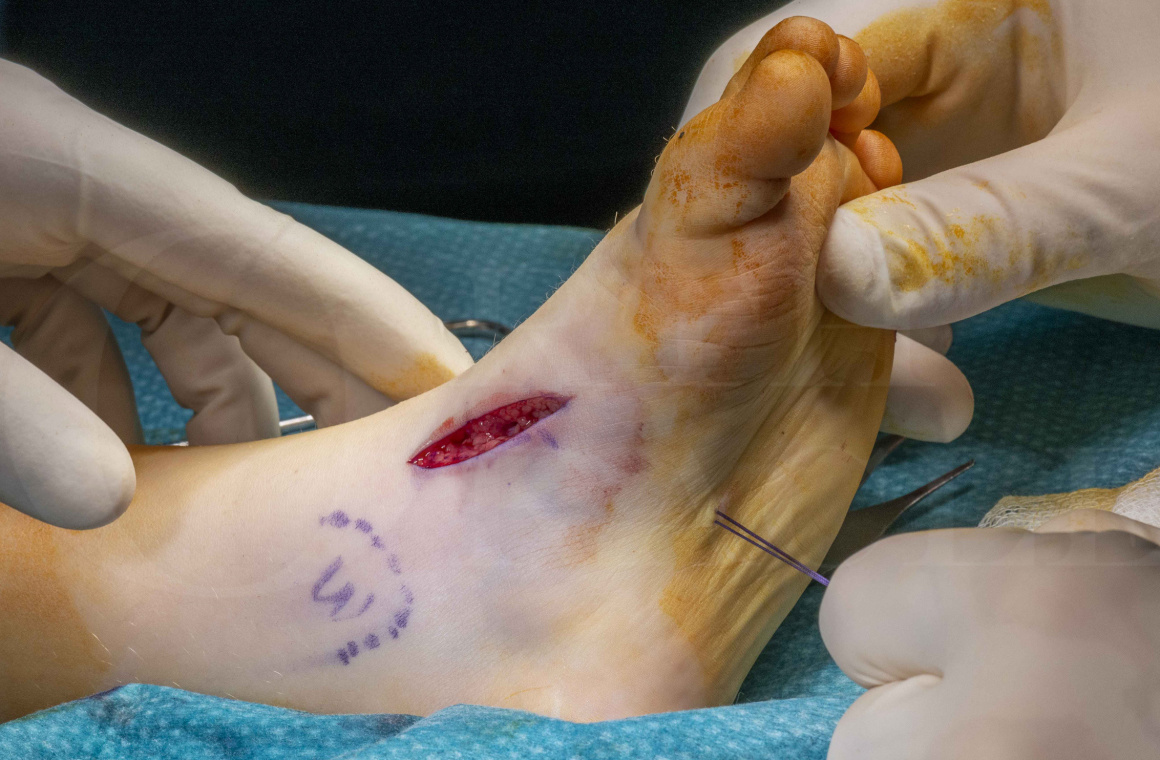Tibialis anterior transfer in Talipes Equinovarus
Overview

Subscribe to get full access to this operation and the extensive Foot Surgery Atlas.
Learn the Tibialis anterior transfer in Talipes Equinovarus surgical technique with step by step instructions on OrthOracle. Our e-learning platform contains high resolution images and a certified CME of the Tibialis anterior transfer in Talipes Equinovarus surgical procedure.
Relative overactivity of the hindfoot invertors (tibialis anterior and posterior) compared to the evertors (peroneus longus and brevis) is common in congenital talipes equinovarus (Clubfoot ) as well as in neuromuscular conditions such as spina bifida and cerebral palsy.
In the ambulant child this results in supination deformity which over time this can become rigid, with calluses and pressure areas over the lateral border of the foot as the hind foot drifts into varus.
Tendon transfer is a useful intervention, providing the foot retains a good passive range of movement with dorsiflexion and eversion at least past neutral. Transfer of tibialis anterior from its anatomical insertion to the 1st metatarsal and medial cuneiform into the lateral cuneiform is a well recognised and reliable procedure to correct a flexible supination deformity. It is rarely indicted before age 2.5 years and furthermore the ossification centre of the lateral cuneiform should have appeared before surgery is considered. There is no upper age limit providing the foot remains supple although most surgeries for CTEV take place between 3 and 5 years.
The technique described here involves passing sutures through the sole of the foot and securing them over a button that is later removed. Authors have described securing the suture to the plantar fascia and in older children bone anchors or bio-absorbable interference screws are suitable alternatives.
Surgery is performed as a daycare or overnight stay. Cast immobilisation is required for 6 weeks during which time there should be restricted weight bearing.
Results are reliable providing the indictions are adhered to. In CTEV tibialis anterior usually has grade 5 power. This is a phasic transfer, which means the muscle is still acting to produce dorsiflexion in swing phase. Given this power is retained and function improved in more than 90% of cases. In neurological conditions outcome may be poorer since muscle power may be sub optimal already. It is rarely advisable to use a tibialis anterior transfer as a static stabiliser. If muscle power is less than MRC grade 4 it is generally preferable to use an orthotic (AFO) or (if functional) tibialis posterior transfer to the dorsum of the foot.
Readers will also find the following OrthOracle surgical techniques of interest:
Posteromedial release for clubfoot in Spina Bifida
Tibialis posterior transfer (through interosseous membrane )for foot drop
Tibialis posterior transfer (for foot drop)
Achilles tendon lengthening: open
Author: Mr Ed Bache FRCS(Tr & Orth)
Institution: The Birmingham Childrens Hospital, Birmingham, UK.
Clinicians should seek clarification on whether any implant demonstrated is licensed for use in their own country.
In the USA contact: fda.gov
In the UK contact: gov.uk
In the EU contact: ema.europa.eu



















